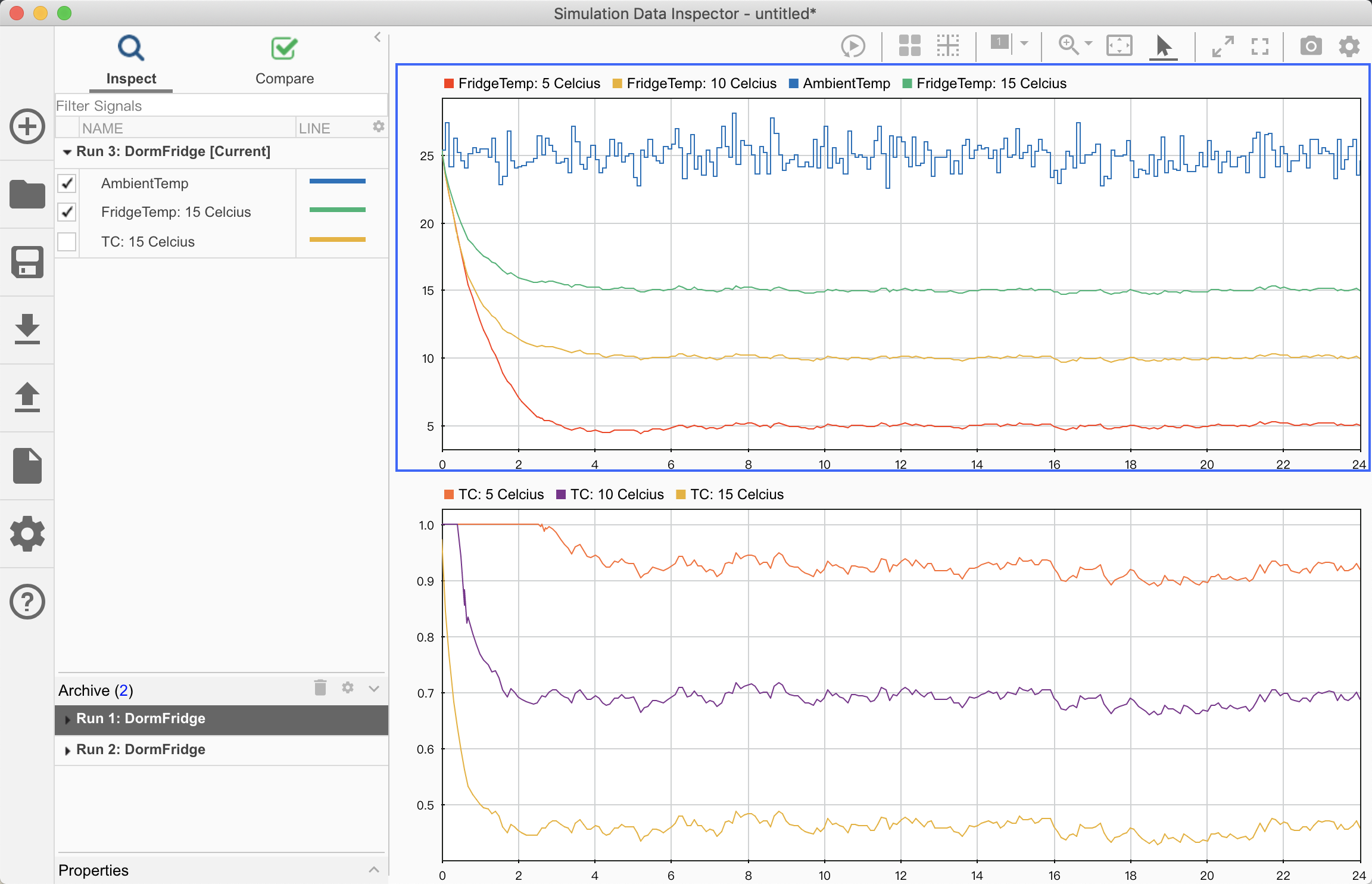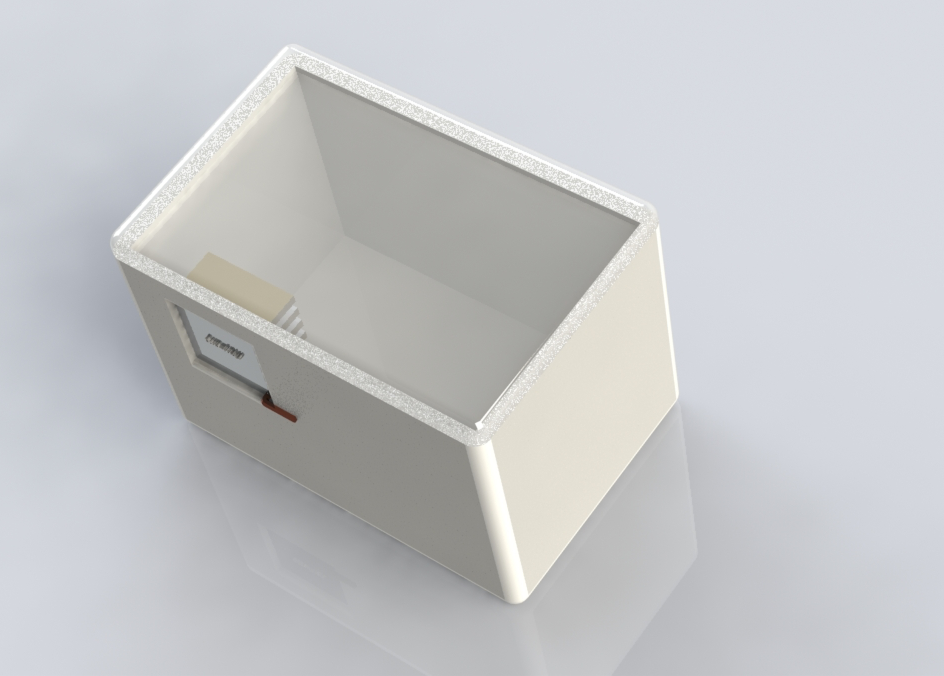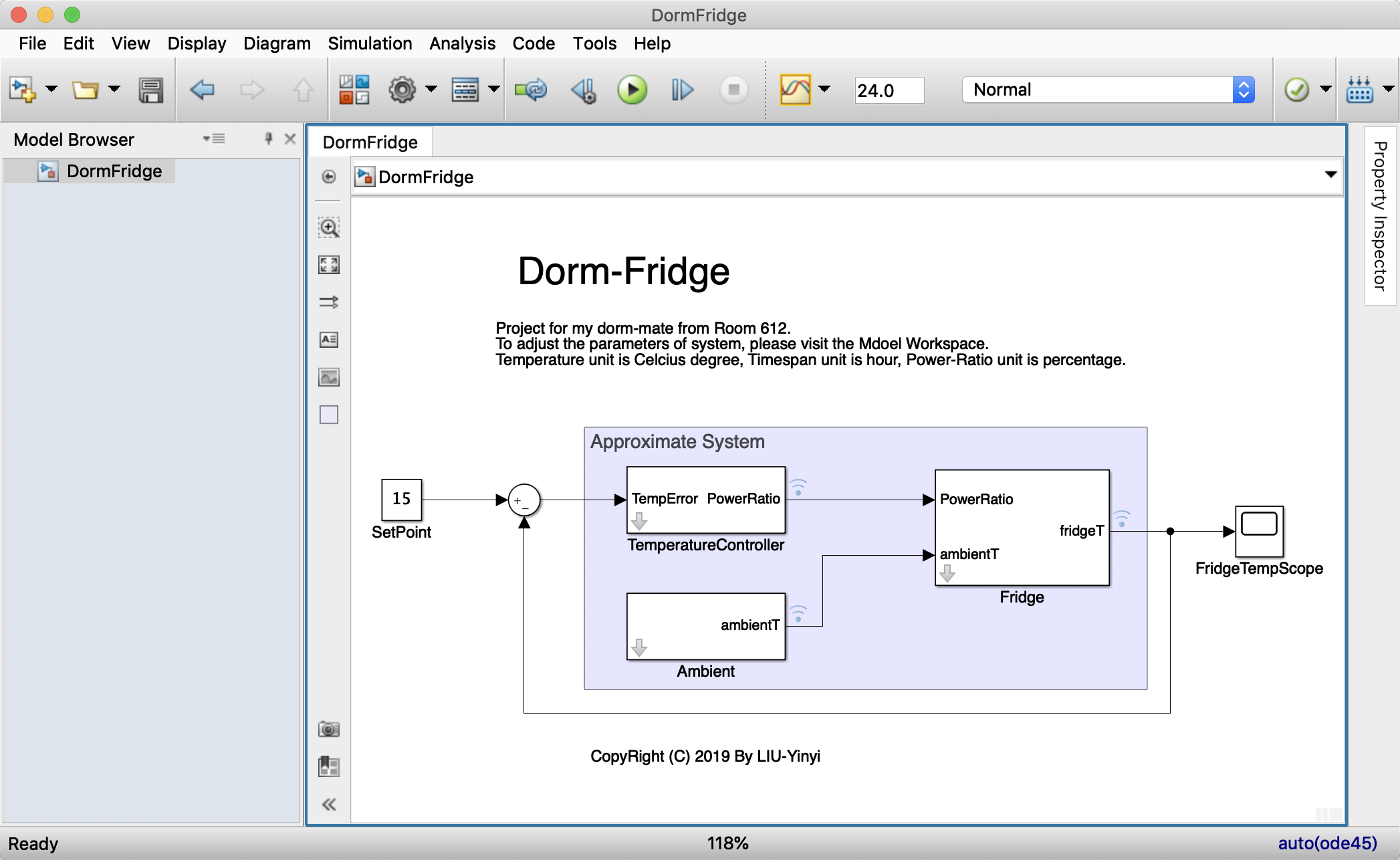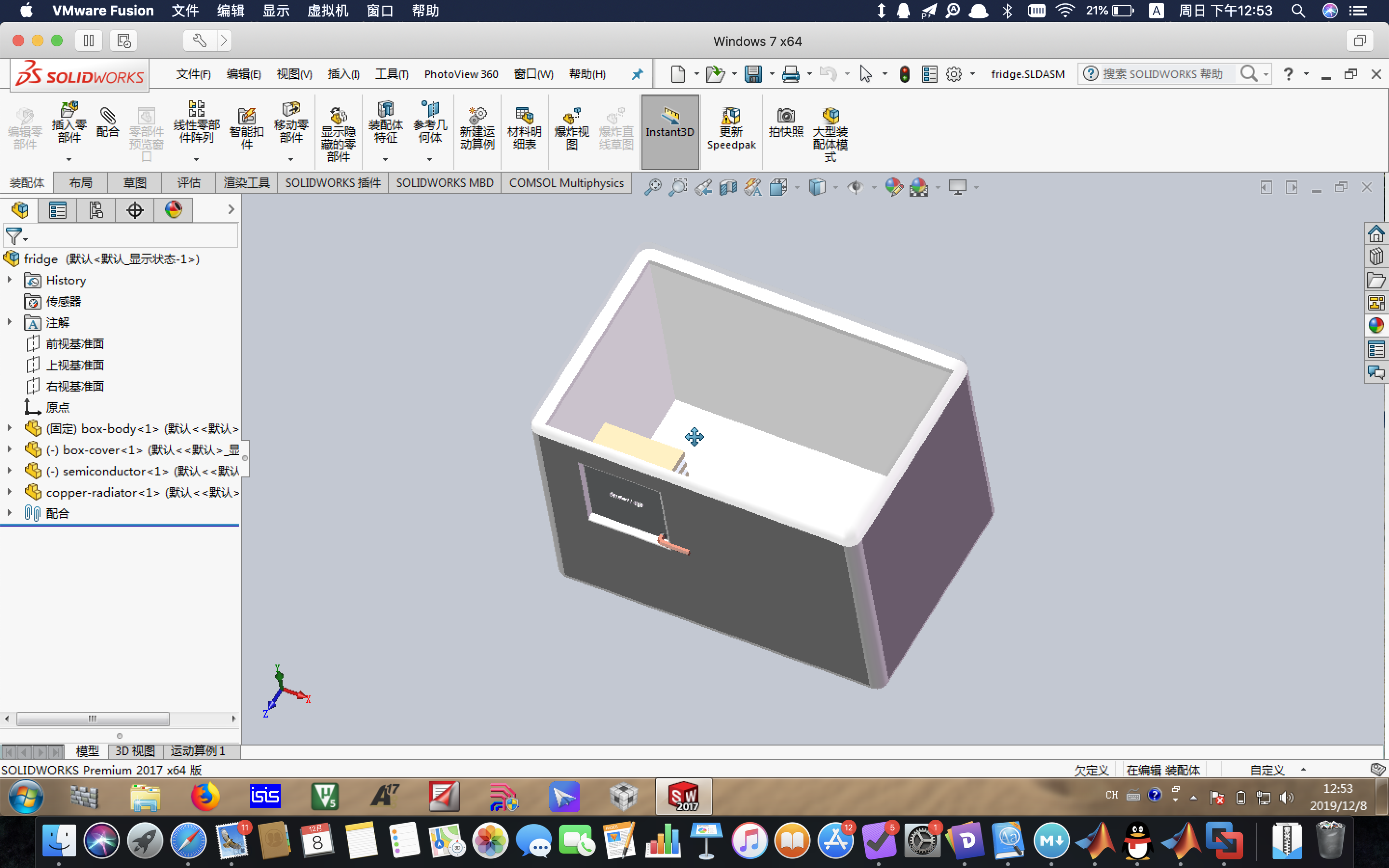- Author: LIU-Yinyi
- Date: 2019-12-08
- Version: 2.0.0 [ ReForge ]
- Abstract: An individual project which helped my dorm mates build up a simple fridge for ice-drink.
This is a project done when I was a sophomore-level student. It was a burning hot summer and my dorm mates wanted some ice-drink but nothing could be used as a cooler and there was no room for a normal size refrigerator in our dorm. It just so happended that our physics class introduced Peltier Semiconductor to us as a heat transfer device. As a result, I took attempts to make one based on this theory.
This project has been re-forged and contains three parts: Simulation, Mechanics and McuCodes. The Simulation directory covers a simulink project to mimic the heat transfer procedure between dorm-fridge and ambient enviroment as well as a simple PID controller for Microprocessor Central Unit. The result helps us test the temperature-control algorithm and estimate the timespan of cooling-process. Objects Matrices as Solidworks format type are saved in the Mechanics part. Corresponding source codes for MCU are comprised in the McuCodes directory.
Simulation Result in Data-Inspector: (Ambient: , TargetPoint:
)

Object Render in Solidworks: (No Videocard in my Mac so it might be coarse)

Firstly the box of fridge was devised at a size of 180mm x 270mm x 190mm. The volume is . Here we suppose that the average density of the air is
so the mass of air is
. The specific heat capacity of air that could be found from books is
.
Secondly the convection heat flow was simplified into a dissipation constant, which described as an equation: , where
is the difference between fridge temperature and ambient temperature. Note here
unit is
.
Thirdly the temperature controller could vary power ratio as to control the cooling process. The real-time power is ratio
multiply maximum power
. The equation could be defined as:
.
For fridge simulation, heat transfer followed the equation: , where
and
indicates the fridge and ambient temperature respectively. Fridge absorbs the heat as a result of negative symbol.
[1] Mathworks, Inc. (August, 2019). Simulink Tutorials and Documents. Retrieve from: https://ww2.mathworks.cn/help/index.html?s_tid=CRUX_lftnav
[2] Picard, Alain, et al. "Revised formula for the density of moist air (CIPM-2007)." Metrologia 45.2 (2008): 149.

